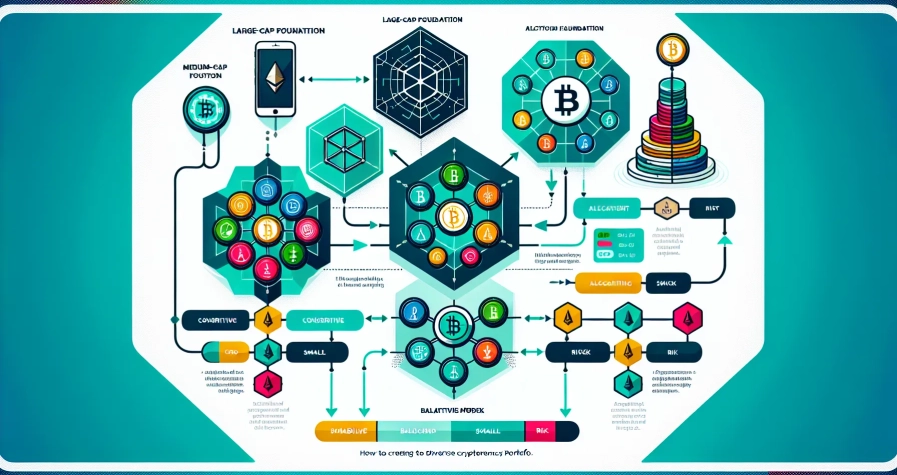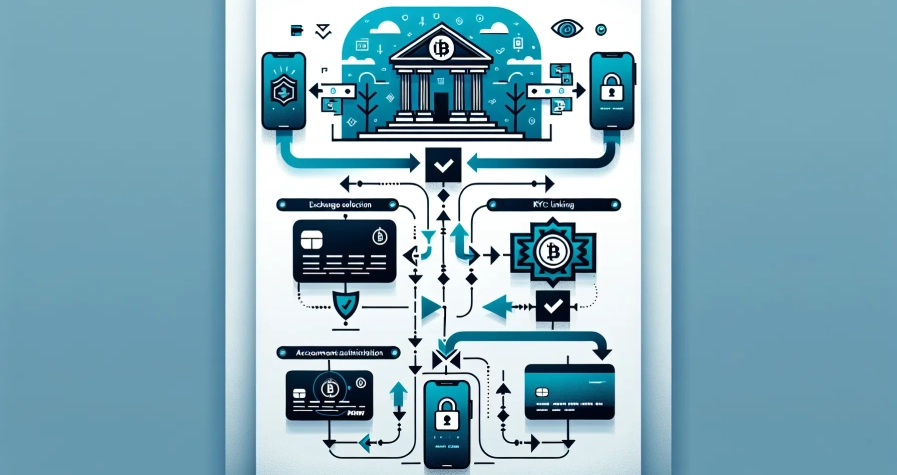Blockchain technology has evolved from a niche interest into a mainstream force driving innovation across finance, development, and digital ownership. Whether you’re curious about cryptocurrencies, eager to build decentralised applications, or simply want to understand how blockchain works, having the right tools can make all the difference. For beginners entering this space in 2025, the ecosystem offers a wealth of resources, but knowing where to start is half the battle.
This guide highlights 11 essential blockchain tools every beginner should use in 2025. From managing digital wallets and exploring blockchain data to writing smart contracts and tracking market movements, these tools offer a practical foundation for anyone looking to confidently navigate the Web3 landscape. Each tool has been selected for its accessibility, reliability, and relevance to those just starting out.
Key Takeaways
- Blockchain tools for beginners in 2025 range from digital wallets like MetaMask and Coinbase Wallet to development environments such as Remix IDE and Hardhat.
- MetaMask serves as the most accessible gateway to Web3, enabling users to store cryptocurrencies, interact with dApps, and manage NFTs through a simple browser extension.
- Etherscan provides transparency by allowing anyone to track Ethereum transactions, verify wallet balances, and inspect smart contract code in real time.
- Development tools like Remix IDE, Hardhat, and OpenZeppelin empower beginners to write, test, and deploy secure smart contracts without extensive infrastructure.
- CoinGecko offers real-time crypto market data and educational content, helping beginners make informed decisions and understand blockchain market dynamics.
- Engaging with Discord and blockchain communities accelerates learning by providing real-time support, tutorials, and networking opportunities tailored to newcomers.
1. MetaMask: Your Gateway to Web3

MetaMask is widely regarded as the most beginner-friendly entry point into the blockchain world. It’s a browser extension and mobile wallet that allows users to store cryptocurrencies, interact with decentralised applications (dApps), and manage NFTs, all from one convenient interface. Compatible with browsers like Chrome, Firefox, and Brave, MetaMask bridges the gap between traditional web browsing and blockchain-powered platforms.
What makes MetaMask so accessible is its simplicity. There’s no need to download an entire blockchain or understand complex infrastructure. Users can send and receive Ethereum and ERC-20 tokens, connect to dApps, and even swap assets directly within the wallet. It supports multiple networks, including Ethereum, Polygon, and Binance Smart Chain, making it a versatile tool for exploring various blockchain ecosystems.
Setting Up Your First Wallet
Getting started with MetaMask takes just a few minutes. After installing the browser extension or mobile app, users are guided through wallet creation. The process involves generating a unique seed phrase, a 12-word backup key that’s critical to wallet recovery. It’s essential to write this phrase down and store it securely offline: anyone with access to it can control the wallet.
Once the wallet is set up, users receive a public wallet address they can share to receive funds. MetaMask also allows users to import existing wallets, add custom tokens, and adjust network settings. For beginners, the interface is intuitive, with clear prompts and straightforward navigation. Within minutes, anyone can be ready to explore Web3, purchase tokens, or connect to their first decentralised app.
2. Etherscan: Blockchain Explorer for Transparency
Etherscan is the go-to blockchain explorer for the Ethereum network. It functions as a search engine for blockchain data, offering transparency into every transaction, wallet, and smart contract on Ethereum. For beginners trying to understand how blockchain works in practice, Etherscan is an invaluable learning tool.
Unlike traditional banking systems, blockchain transactions are publicly recorded and verifiable. Etherscan allows users to view transaction histories, check wallet balances, monitor gas fees, and inspect smart contract code. It’s also useful for verifying whether a transaction has been completed, tracking NFT ownership, and exploring the activity of specific addresses.
How to Track Transactions
Tracking a transaction on Etherscan is straightforward. Simply visit the Etherscan website and enter a wallet address, transaction hash (a unique identifier for each transaction), or smart contract address into the search bar. The results display detailed information, including transaction status, timestamps, gas fees, and the wallets involved.
For instance, if a beginner sends Ethereum from MetaMask to another wallet, they can copy the transaction hash and paste it into Etherscan to confirm the transfer. This transparency builds trust and understanding, especially when dealing with unfamiliar platforms or services. Etherscan also offers token trackers, analytics, and gas fee estimators, making it a comprehensive resource for anyone learning to navigate Ethereum.
3. Remix IDE: Smart Contract Development Made Simple
Remix IDE is a powerful yet beginner-friendly tool for writing, testing, and deploying smart contracts. It’s a web-based integrated development environment (IDE) that requires no installation, making it ideal for those new to blockchain development. Remix supports Solidity, the programming language used to create smart contracts on Ethereum.
What sets Remix apart is its accessibility. Beginners can experiment with code directly in their browser, compile contracts, and deploy them to test networks, all without setting up a local development environment. It includes built-in debugging tools, plugins, and a user-friendly interface that simplifies the learning curve.
Writing Your First Smart Contract
Writing a first smart contract in Remix can be as simple as following a basic tutorial. The IDE comes with sample contracts to help beginners understand syntax and structure. A typical first contract might be a “Hello World” or a simple token contract that demonstrates how to store and retrieve data on the blockchain.
After writing the contract, users compile it within Remix to check for errors. Once compiled successfully, the contract can be deployed to a test network like Goerli or a local blockchain via Ganache. Remix even allows users to interact with deployed contracts, calling functions and testing behavior in real time. For beginners eager to understand how decentralised applications work under the hood, Remix IDE is an essential starting point.
4. Coinbase Wallet: User-Friendly Crypto Storage
Coinbase Wallet is a mobile-first cryptocurrency wallet designed for ease of use and security. Unlike the Coinbase exchange app, Coinbase Wallet is a non-custodial wallet, meaning users retain full control over their private keys. It supports a wide range of cryptocurrencies, NFTs, and dApps, making it a versatile tool for beginners who want more than just a place to store assets.
The wallet’s interface is clean and intuitive, with features like QR code scanning for quick transfers, built-in dApp browsing, and support for multiple blockchain networks. Users can store Ethereum, Bitcoin, and thousands of other tokens, as well as view and manage their NFT collections directly within the app.
For beginners concerned about security, Coinbase Wallet offers biometric authentication, cloud backups (optional), and a recovery phrase system. It also integrates seamlessly with decentralised exchanges and DeFi platforms, enabling users to swap tokens, earn interest, and participate in blockchain-based finance, all from one app. Its reputation and backing by Coinbase lend additional credibility, making it a trusted choice for newcomers.
5. OpenZeppelin: Secure Smart Contract Libraries
OpenZeppelin is a collection of secure, audited smart contract libraries widely used by developers across the blockchain space. For beginners venturing into smart contract development, OpenZeppelin provides a foundation of reusable code that adheres to industry standards like ERC-20 (tokens) and ERC-721 (NFTs).
What makes OpenZeppelin invaluable is its focus on security. Writing smart contracts from scratch can introduce vulnerabilities, and mistakes can be costly on a live blockchain. OpenZeppelin’s libraries have been rigorously tested and audited, reducing the risk of exploits. They’re also well-documented, making them accessible even to those with limited coding experience.
Pre-Built Templates for Beginners
OpenZeppelin offers pre-built templates that serve as starting points for common contract types. For example, a beginner can use an ERC-20 template to create a custom token in just a few lines of code. These templates include essential functions like minting, transferring, and burning tokens, all implemented securely.
By importing OpenZeppelin libraries into Remix IDE or Hardhat, beginners can quickly build functional smart contracts without reinventing the wheel. The documentation includes examples, explanations, and best practices, helping new developers understand not just how to use the code, but why it’s structured that way. For anyone serious about learning blockchain development, OpenZeppelin is a must-have resource.
6. Hardhat: Professional Ethereum Development Environment
Hardhat is a flexible and powerful development framework tailored for Ethereum smart contract development. While slightly more advanced than Remix, it’s still approachable for beginners ready to move beyond browser-based tools. Hardhat offers a local development environment with built-in testing, debugging, and deployment capabilities.
One of Hardhat’s standout features is its task runner, which automates repetitive tasks like compiling contracts, running tests, and deploying code. It integrates seamlessly with other tools like OpenZeppelin and Ethers.js, and supports plugins that extend functionality. Developers can also use Hardhat to fork live blockchains, allowing them to test contracts against real-world conditions without spending actual funds.
For beginners, Hardhat’s detailed error messages and stack traces make debugging much easier. The active community and extensive documentation provide plenty of tutorials and examples to follow. Although it requires some familiarity with JavaScript and the command line, Hardhat is an excellent next step for those looking to take their blockchain development skills to a professional level.
7. Infura: Blockchain Infrastructure Without the Hassle
Infura is a cloud-based infrastructure provider that offers scalable API access to Ethereum and other blockchain networks. For beginners, running a full blockchain node is impractical, it requires significant storage, bandwidth, and technical know-how. Infura eliminates this barrier by providing instant, reliable access to blockchain data via simple API calls.
Using Infura, developers can connect their dApps or scripts to Ethereum without maintaining their own infrastructure. This is especially useful for beginners building their first projects, as it allows them to focus on learning and coding rather than managing servers. Infura supports multiple networks, including Ethereum mainnet, testnets, and layer-2 solutions like Polygon.
API Access for Developers
Getting started with Infura is straightforward. After signing up for a free account, users receive an API key that can be used to send requests to the blockchain. For example, a developer might use Infura to query wallet balances, fetch transaction histories, or deploy smart contracts via a Web3 library like Ethers.js or Web3.js.
Infura’s free tier is generous, making it ideal for beginners experimenting with small projects. The platform also offers detailed documentation and support, ensuring that even those new to API usage can get up and running quickly. By removing infrastructure complexity, Infura empowers beginners to build and learn with confidence.
8. Truffle Suite: Complete dApp Development Framework
Truffle Suite is one of the oldest and most comprehensive frameworks for Ethereum dApp development. It includes Truffle (for smart contract management), Ganache (for local blockchain simulation), and Drizzle (for front-end integration). Together, these tools form a complete development pipeline, from writing code to deploying and interacting with live applications.
Truffle streamlines tasks like compiling contracts, running automated tests, and managing deployments across multiple networks. It supports migration scripts, making it easy to deploy contracts in a repeatable, version-controlled manner. For structured projects, Truffle’s conventions and organisation help beginners adopt best practices early on.
While Truffle has a steeper learning curve than some other tools, it rewards persistence with a robust, production-ready workflow. The Truffle community is active, and there are countless tutorials and courses available. For beginners planning to work on more complex projects or collaborate with teams, Truffle Suite provides a solid foundation.
9. Ganache: Local Blockchain for Testing
Ganache is a personal blockchain simulator that allows developers to test smart contracts and dApps in a controlled, local environment. Part of the Truffle Suite, Ganache provides an instant blockchain with pre-funded accounts, making it easy to experiment without spending real cryptocurrency or waiting for transactions to confirm.
Ganache is available as both a command-line tool and a desktop application with a graphical interface. The GUI version is particularly beginner-friendly, displaying accounts, blocks, transactions, and logs in an easy-to-read format. Developers can see exactly how their contracts behave, inspect gas usage, and troubleshoot issues before deploying to a live network.
Why Testing Locally Saves Time and Money
Testing on a live blockchain, even a testnet, can be slow and cumbersome. Transactions need to be mined, gas fees (even if fake) must be managed, and debugging can be challenging. Ganache eliminates these friction points by offering instant transaction confirmation and unlimited test funds.
For beginners, this means they can iterate quickly, trying out different contract logic, testing edge cases, and learning from mistakes without consequences. Once a contract works perfectly on Ganache, developers can confidently move to a testnet and eventually mainnet. This workflow saves both time and money, and reduces the anxiety that comes with deploying untested code to a public blockchain.
10. CoinGecko: Real-Time Crypto Market Data
CoinGecko is a comprehensive cryptocurrency tracking platform that provides real-time data on prices, market capitalisation, trading volumes, and trends. For beginners trying to make sense of the fast-moving crypto market, CoinGecko is an essential resource for well-informed choice-making.
Unlike some competitors, CoinGecko is free to use and doesn’t require an account. The platform tracks thousands of cryptocurrencies and tokens, offering detailed charts, historical data, and comparisons. Users can set up watchlists, monitor portfolio performance, and explore emerging projects.
CoinGecko also provides educational content, including explanations of market metrics, guides to DeFi, and updates on blockchain events. For beginners, this combination of data and education makes CoinGecko more than just a price tracker, it’s a learning tool that helps users understand market dynamics, evaluate projects, and track their investments with confidence.
11. Discord and Blockchain Communities: Learning Through Engagement
While not a traditional tool, Discord and other blockchain communities are indispensable for beginners. The blockchain space evolves rapidly, and staying connected to active communities provides access to real-time support, tutorials, project updates, and networking opportunities.
Many blockchain projects, developer groups, and educational platforms host Discord servers where beginners can ask questions, share progress, and learn from more experienced members. These communities foster collaboration and mentorship, making the learning process less isolating and more engaging.
Finding the Right Communities
Finding the right community depends on a beginner’s goals. Those interested in development might join servers focused on Ethereum, Solidity, or Web3.js. Investors and traders might prefer communities centred around market analysis and DeFi. There are also beginner-specific servers designed to onboard newcomers without overwhelming them.
When joining a community, it’s wise to observe first, read pinned resources, and then participate. Most communities have channels dedicated to questions, resources, and announcements. Engaging respectfully and asking thoughtful questions often leads to helpful responses and lasting connections. For beginners, these communities can be the difference between feeling lost and feeling empowered in the blockchain space.
Conclusion
Mastering blockchain technology in 2025 begins with the right tools. From securing your first digital assets with MetaMask and Coinbase Wallet, to exploring blockchain data on Etherscan, to building and testing smart contracts with Remix, Hardhat, and Ganache, each tool serves a distinct purpose in a beginner’s journey.
Whether you’re drawn to blockchain for development, investment, or simply curiosity, these 11 tools provide a practical, accessible foundation. Pair them with active participation in communities like Discord, and you’ll find yourself navigating the Web3 landscape with growing confidence and competence. The blockchain world is vast, but with these resources at your fingertips, it’s also more approachable than ever.
Frequently Asked Questions
What is the best blockchain tool for beginners in 2025?
MetaMask is widely regarded as the most beginner-friendly blockchain tool. It’s a browser extension and mobile wallet that allows users to store cryptocurrencies, interact with decentralised applications, manage NFTs, and explore multiple blockchain networks like Ethereum, Polygon, and Binance Smart Chain from one intuitive interface.
How can I track my blockchain transactions as a beginner?
Etherscan is the go-to blockchain explorer for tracking Ethereum transactions. Simply enter your transaction hash, wallet address, or smart contract address into Etherscan’s search bar to view detailed information including transaction status, timestamps, gas fees, and wallet addresses involved in the transfer.
What is a blockchain explorer and why do I need one?
A blockchain explorer is a search engine for blockchain data that provides transparency into every transaction, wallet, and smart contract. It allows users to verify transactions, check wallet balances, monitor gas fees, track NFT ownership, and understand how blockchain works in practice through publicly recorded data.
Can I develop smart contracts without coding experience?
Remix IDE makes smart contract development accessible to beginners. It’s a web-based tool requiring no installation, supporting Solidity programming with built-in debugging and sample contracts. Additionally, OpenZeppelin provides secure, pre-built templates for common contract types like tokens and NFTs, reducing the need for extensive coding knowledge.
Why should beginners use blockchain tools like Ganache for testing?
Ganache provides a local blockchain simulator where beginners can test smart contracts without spending real cryptocurrency or waiting for transaction confirmations. It offers instant blockchain simulation with pre-funded accounts, allowing developers to iterate quickly, troubleshoot issues, and learn from mistakes in a risk-free environment before deploying live.
How do I stay updated with blockchain technology trends in 2025?
Joining blockchain communities on Discord and using platforms like CoinGecko are essential for staying updated. Discord servers provide real-time support, tutorials, and networking opportunities, whilst CoinGecko offers comprehensive market data, educational content, and insights into emerging projects, helping beginners understand evolving market dynamics and technology developments.









